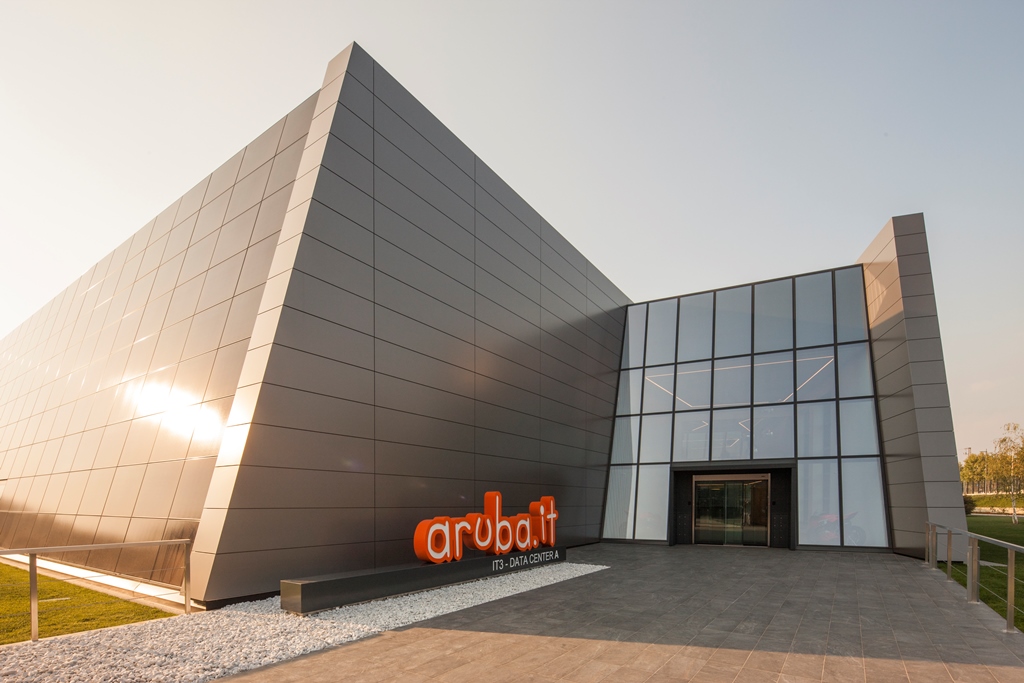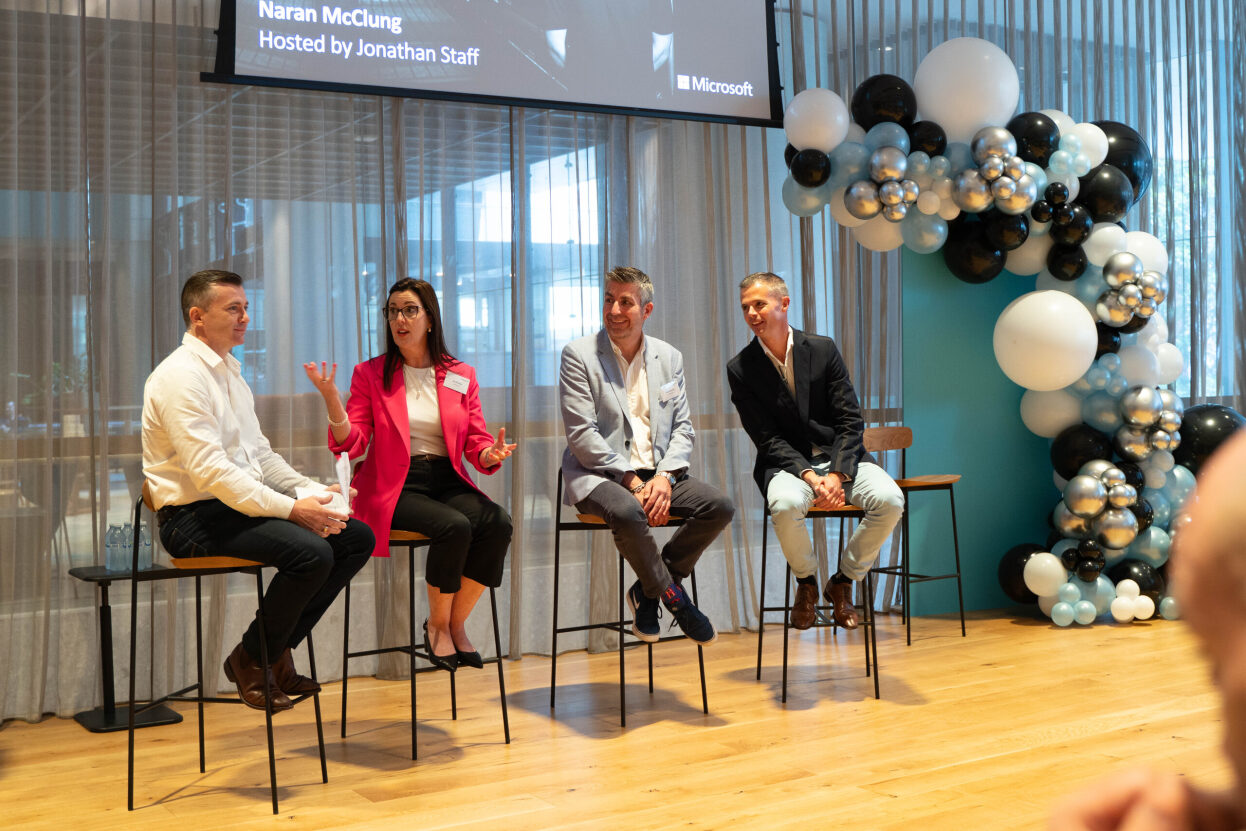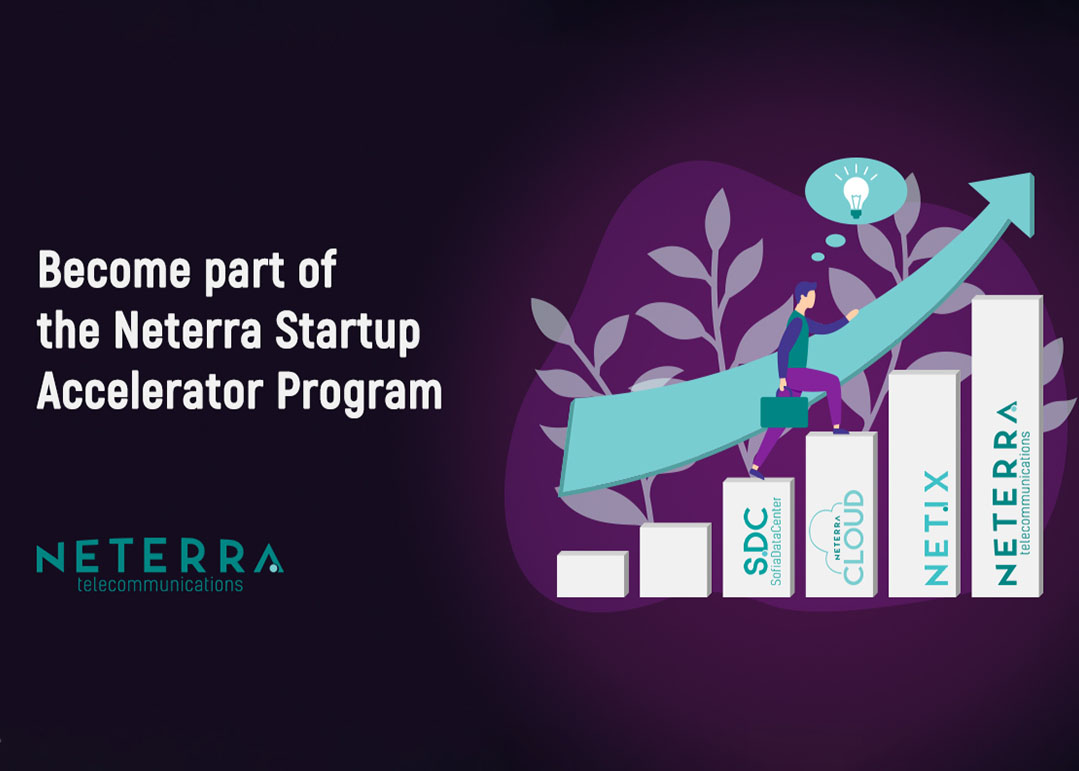Features
Data Centre Operations: Optimising Infrastructure for Performance and Reliability
News
News in Cloud Computing & Data Storage
Aruba and University of Pisa team up to optimise cloud resources
Aruba has announced a new collaboration with the Department of Information Engineering at the University of Pisa.
With mounting economic and environmental pressures, and regulations like the European Commission’s Energy Efficiency Directive (EED) setting the bar, energy efficiency is rapidly becoming a cornerstone of effective service design.
It is with these priorities in mind that Aruba and the Department of Information Engineering at the University of Pisa have reached this two-year framework agreement, in which an experimental project of machine learning and AI applied to cloud computing has been developed. The project aims to develop an integrated solution for load management on cloud platforms, based on the prediction of the resources used by virtual machines (VMs). Predictions will be based on the analysis of historical data relating to VMs, and through the development of specific algorithms, it will aim to optimise the energy consumption of hardware, while guaranteeing the requirements of VM users.
Since cloud environments are generally used dynamically and flexibly, their cost is influenced by energy consumption. Being able to optimise the use of these resources - for example, by predictively modulating the amount of hardware as per the specific needs of customers - can reduce consumption when not needed and as a result, offer the service at a better cost.
Two different algorithms will be developed through the joint project:
A dynamic VM profiling algorithm to outline certain profiles based on the resources used historically.
An algorithm for managing VMs that exploits profiles to manage their execution on the different hardware that make up the cloud platform, in order to optimise energy consumption, while guaranteeing performance.
The project, therefore, will make it possible to develop an integrated solution for virtual machine management on a cloud platform based on load prediction and to implement a proof-of-concept based on OpenStack for field experimentation through application cases. In detail, the main benefits of the project include:
The possibility of being able to move the load between OpenStack nodes on a predictive and historical basis to optimise the use of resources on the nodes.
The possibility of guaranteeing adequate resources for client requests, optimising the use of servers dedicated to the service, without creating artificial limitations.
The possibility of having stand-by computation nodes in OpenStack clusters to be activated according to load distribution needs.
"We are proud to announce our new collaboration with a prestigious institute such as the University of Pisa, a significant step towards innovation in the practical application of machine learning within the cloud ecosystem,” comments Daniele Migliorini, Head of Engineering at Aruba. “This partnership reflects our ongoing commitment to technology collaboration with Italian academic institutions of excellence, in order to offer cutting-edge solutions and meet the rapidly evolving needs of the market. We are confident that the synergy between our experience in the sector and the expertise of the University of Pisa will result in solutions that will shape the future of the cloud and encourage benefits that can be derived from artificial intelligence, optimising the use of energy in the data centre sector with a view to long-term sustainability."
“Our department has a long tradition of dialogue and work alongside companies,” comments the Director of the Department of Information Engineering, Andrea Caiti. “We have several active laboratories dedicated to the research of 4.0 and 5.0, which have now acquired not only local, but also national and international relevance. We receive numerous requests for collaboration from businesses for training courses, co-design of solutions, use of the cutting-edge tools in our laboratories for product studies, and to set up joint research laboratories. This openness to collaboration has enabled us to contribute to effectively bridging the gap that has always existed between research and enterprise, literally bringing two worlds that usually don’t speak to each other to the same table."
"The opportunity to collaborate with a large company like Aruba allows our department to work on frontier topics in the area of cloud computing technologies. This gives us the opportunity to work on innovative solutions, with a potentially significant impact on areas such as energy efficiency and environmental sustainability, which are crucial in the development of the cloud of the future," concludes the scientific head of the collaboration, Carlo Vallati.
Isha Jain - 17 January 2024
Colocation Strategies for Scalable Data Centre Operations
Data
Data Centre Build News & Insights
Data Centre Operations: Optimising Infrastructure for Performance and Reliability
Data Centres
News in Cloud Computing & Data Storage
Renewables and Energy: Infrastructure Builds Driving Sustainable Power
Vertiv opens a new manufacturing facility and test lab in India
Vertiv has announced the opening of a new manufacturing facility in Pune, India. The opening was to meet the surging demand for data centres and supporting infrastructure solutions globally, including India and the APAC region.
The new plant manufactures thermal management products and solutions tailored for colocation, cloud, telecom, and enterprise data centres, catering to both domestic and international markets. This is Vertiv’s third facility in India, joining with existing manufacturing facilities in Ambernath and Pune.
Spanning 4.8 acres (210,000ft2), the facility supports the manufacturing of cooling solutions ranging from 200W to 2MW+, including adiabatic free cooling chillers, large custom air handling units (AHU), thermal wall units, a new range of large direct expansion (DX), packaged DX, free cooling with economiser units, a new range of in-row cooling units, wall mount units, and rack cooling systems. The facility also boasts state-of-the-art psychometric labs, providing performance testing, a customer experience centre, and design support capabilities. It is located in an India Green Building Council (IGBC) compliant park focusing on sustainability and reducing environmental impact.
CEO of Vertiv, Giordano (Gio) Albertazzi, says, “With increasing global digitalisation and the rapid adoption of Artificial Intelligence (AI), the data centre industry is experiencing growth and a demand for more capacity, including for data centre thermal and power infrastructure. India’s emergence as a data centre hub in the APAC region is a key reason that we built this third manufacturing facility in India, and it reinforces our commitment to nurturing the country’s data centre ecosystem while also addressing global demand.”
Jessica Pereira - 12 January 2024
Data Centre Operations: Optimising Infrastructure for Performance and Reliability
News
News in Cloud Computing & Data Storage
Nasuni named a top enterprise cloud-based NAS consolidation solution
Nasuni has announced that analyst firm DCIG has named the Nasuni File Data Platform a 'Top Five Storage Solution' in the 2024-25 DCIG Top Five Enterprise Cloud-based NAS Consolidation Solutions report.
As the pace of data growth continues to accelerate, organisations face increasing hardware, software, management, and maintenance expenses. Additionally, there is a plethora of data silos without global visibility into the file data of its multiple network attached storage (NAS) devices and file servers. Based on enterprise-class software-defined storage, cloud-based NAS consolidation migrates file data from multiple file servers and NAS devices into a cloud-based storage platform.
“Natively built for the cloud, the Nasuni File Data Platform places the object store at the centre of its software-defined architecture,” says Todd Dorsey, DCIG Senior Storage Analyst and Author of the report. “Enterprises can replace legacy file infrastructure consisting of multiple file servers, NAS, data protection, and management toolsets with a single global file system.”
DCIG evaluated 31 software-defined storage solutions for a consolidated cloud-based network attached storage (NAS) and named Nasuni as one of its top five solutions for three key capabilities:
Flexible, cloud-based architecture – Nasuni integrates with all popular cloud storage providers and leading solutions for private cloud storage, providing the flexibility to use the cloud solutions best for each organisation. The patented UniFS Global File System organises file data, metadata, and snapshots within cloud storage while the Nasuni Orchestration Center (NOC) serves as the control plane, providing file synchronisation, monitoring, analysis, and tuning of an organisation’s file platform.
Edge performance – Organisations deploy Nasuni Edge instances as a VM that replaces traditional file servers and NAS. This edge instance serves as a lightweight access point to cloud storage, supporting popular hypervisors such as VMware ESXi, Microsoft Hyper-V, and Nutanix AHV. Nasuni dynamically caches active files for users and applications for fast access, which removes the problem of cloud latency and egress fees while reducing the local storage footprint.
Data security and protection – Nasuni encrypts all data, metadata, and snapshots in transit and at rest with AES-256 encryption, and utilises a zero trust security framework. Nasuni protects data from ransomware attacks with continuous versioning that removes the need for separate backup processes and allows organisations to recover previous file, folder, volume, or system from before an attack occurred with minute granularity.
“The demands of today’s leading enterprises require a scalable cloud-native solution to replace traditional network attached storage, reduce risk, and optimise cloud spending,” says David Grant, President at Nasuni. “The recognition of Nasuni by DCIG as a top five cloud-based NAS consolidation solution is a testament to our company vision and the value our platform provides.”
To download the report, click here.
Isha Jain - 15 December 2023
Artificial Intelligence in Data Centre Operations
Colocation Strategies for Scalable Data Centre Operations
Data Centre Operations: Optimising Infrastructure for Performance and Reliability
News in Cloud Computing & Data Storage
Crusoe announces data centre expansion with atNorth in Iceland
atNorth, a Nordic colocation, high-performance computing, and artificial intelligence service provider has announced its collaboration with Crusoe Energy Systems to collocate Crusoe Cloud GPUs in atNorth’s ICE02 data centre in Iceland. This is Crusoe’s first project in Europe and the partnership advances Crusoe’s mission to align the future of computing with the future of the climate. It plans to do this by powering Crusoe’s high-performance computing infrastructure with clean energy sources.
“I’m thrilled that our quest to source low carbon power has led us to Iceland,” says Cully Cavness, Crusoe’s Co-Founder and President. “This partnership with atNorth allows us to bring the concentrated energy demand of compute infrastructure directly to the source of clean, renewable geothermal and hydro energy.”
“It is very important to atNorth that we are collaborating with companies that share our approach to sustainability,” says E. Magnús Kristinsson, CEO of atNorth. “Crusoe’s commitment to maximise their compute while minimising their environmental impact made them a perfect fit.”
The atNorth ICE02 site leverages more than 80MW of power, benefiting from the sustainable geothermal and hydro energy produced in Iceland. The country also benefits from low latency networks and fully redundant connectivity to customer bases in North America and Europe via multiple undersea fibre optic cables.
“AI and machine learning are driving the demand for data centres to grow at a record rate,” says Chris Dolan, Chief Data Centre Officer of Crusoe. “We’re excited about our initial commitment to atNorth and look forward to potentially expanding capacity even more in the future.” The news follows atNorth’s recent acquisition of Gompute, a provider of High Performance Computing (HPC) and data centre services, and the announcement of three new sites: FIN04 in Kouvola, Finland; FIN02 in Helsinki, Finland; and DEN01 in Copenhagen, Denmark.
Jessica Pereira - 15 December 2023
Data Centre Operations: Optimising Infrastructure for Performance and Reliability
Enterprise Network Infrastructure: Design, Performance & Security
News in Cloud Computing & Data Storage
Macquarie Cloud launches global-first Azure SaaS
Macquarie Cloud Services, part of Macquarie Technology Group, has launched a global-first Software-as-a-Service (SaaS) offering on the Microsoft Marketplace, unlocking previously unavailable services, benefits, and value for Australian organisations transacting directly with Microsoft on an enterprise agreement.
Macquarie Guard is a full turnkey SaaS solution that automates practical guardrails into Azure services, enabling continuous cost optimisation and governance, accelerated development, and greater speed to market. It will also allow Azure customers on Microsoft agreements to draw down on its Microsoft Azure Consumption Commitment (MACC), unlocking credits and incentives much faster and helping CIOs make the most of their public cloud investment. It even features Macquarie Cloud Services’ managed Azure intellectual property (IP) and associate services architecture, as well as more than 50 unique function applications with enhanced monitoring, reporting, and security capabilities.
“Macquarie Guard is the culmination of the unique IP across our 120-strong team and our experience providing leading Azure cloud services to Australian organisations,” says Macquarie Cloud Services' Head of Azure, Naran McClung.
“Our purpose is to help customers that are underserved and overcharged succeed. We’re ready to bring that expertise and our NPS-proven service to a whole new segment, right as organisations are increasing their cloud footprint and looking to technologies like AI and machine learning.”
Macquarie Guard’s 24x7 automated operations deliver auto-remediation, auto-healing, continuous cost optimisation, compliance and governance, advanced logging, alerting, monitoring, ticketing, and reporting.
“Macquarie Guard’s AI-powered guardrails help organisations liberate their teams from burdensome resource and infrastructure management and spend more time on meaningful and secure change,” says Naran.
The launch follows Microsoft recently announcing it would invest A$5bn in the next two years to bolster Australian cyber security, cloud, and AI capabilities.
“Customers are truly seeing what real transformation mean by leading with securing their data,” says Microsoft Chief Partner Officer Australia and New Zealand, Vanessa Sorenson.
“Macquarie Cloud Services is part of this transformation journey Microsoft is on. Together we can provide a secure lens and guardrails around customers’ cloud environments, safeguard their data, and service what they truly need to transform.”
Isha Jain - 4 December 2023
Data Centre Operations: Optimising Infrastructure for Performance and Reliability
News
News in Cloud Computing & Data Storage
Arelion announces access to Oracle Cloud Infrastructure via FastConnect
Arelion has announced it will offer direct connectivity to Oracle Cloud Infrastructure (OCI) via OCI FastConnect in the new Oracle Cloud Monterrey region in Mexico. The new cloud region enables its customers to harness the power of OCI locally and leverage its offerings and services, including Oracle Autonomous Database, to unlock innovation and drive business growth.
Arelion provides connectivity to OCI via Oracle’s first cloud region in Querétaro, and through its continued collaboration, the global internet carrier will provide secure, dedicated and scalable connectivity to OCI globally via the new Monterrey region. With OCI, customers benefit from best-in-class security, consistent high performance, simple and predictable pricing, and the tools and expertise needed to bring enterprise workloads to cloud quickly and efficiently.
Other key insights about Arelion’s support for the Oracle Cloud Monterrey region include:
Arelion Cloud Connect will provide customers with self-provisioned, flexible, and scalable private network connectivity to OCI FastConnect locations at speeds of one, two, five or 10GB/s over its global internet backbone. It enables customer connection to multiple OCI on-ramps for increased resilience and control over customers’ cloud networks. This will support the increasing customer demand in Monterrey and throughout Mexico for quality, low-latency connectivity to global cloud services.
Via OCI FastConnect, it will provide customers throughout Mexico with access to a wide range of applications and infrastructure services through an elastic, resilient connection, featuring higher bandwidth, lower latency, and more consistent performance versus public internet-based connections.
Monterrey is a diverse industrial hub strategically located near the US, where many international companies have established operations through nearshoring investments, including significant investment from Tesla. Monterrey’s major market verticals include financial services, manufacturing, automotive, IT services and higher education. The city is a hotbed for tech innovation, ranking as one of Mexico’s top ten markets for tech talent.
Arelion is one of the global internet carriers to support Mexico's international market growth after 2013 market reforms. Its collaborations with key partners have resulted in nine Points of Presence (PoPs) in Mexico, including data centres in Querétaro, Guadalajara, Monterrey, Merida, Mexico City, and San Luis Potosi, as well as in US markets serving Mexico, including El Paso, Laredo, McAllen, and San Diego.
OCI’s extensive network of more than 90 FastConnect global and regional partners offer customers dedicated connectivity to Oracle Cloud Regions and OCI services.
Isha Jain - 7 November 2023
Data Centre Operations: Optimising Infrastructure for Performance and Reliability
News
News in Cloud Computing & Data Storage
Nutanix appoints its first cloud economist for Australia and New Zealand
Nutanix has appointed Shree Balachandran to the newly created position of Australia and New Zealand (A/NZ) Cloud Economist. The industry veteran will work closely with the local Nutanix leadership and sales team, as well as the partner community, to help organisations achieve greater value in its cloud environments.
Shree Balachandran is based in Melbourne and brings more than 25 years of strategy, sales, and operations experience from leading technology companies such as HPE and Oracle. He says that cloud economics is front of mind, as companies retreat from ‘all-in’ strategies and cloud costs including ingress and egress (transferring data in and out from an environment) continue to soar.
“Many companies in Australia and New Zealand that said a few years ago, ‘we’re putting it all in public cloud’, hit a crossroads at about 15% of their data, where going any further is either impossible or prohibitively expensive,” says Shree Balachandran.
“This has crystalised the idea of hybrid multicloud strategies as the way forward, but many are still unsure of how to get there, what data and applications should sit where and for how long, and where they should focus their investments. Nutanix is building the blueprint for how they can do this and I’m looking forward to helping the company educate the market and execute on its vision.”
Shree Balachandran’s appointment comes as Australian companies are expected to spend $19.9bn, and New Zealand companies $3bn, on cloud services this year alone. It also follows Microsoft, which partners with Nutanix on its Clusters (NC2) hybrid cloud platform, announcing it would invest $5bn to expand its hyperscale cloud and AI infrastructure in Australia.
“There’s no one-size-fits-all, but if your environment has too much legacy on-premises infrastructure, you’re losing out. If you have too much public cloud and no system in place to make your data interoperable between different clouds, you’re losing out. Without applying an economic lens to cloud spend, costs will soar – particularly as data grows and grows and intensive applications like AI take hold,” he continues.
Cloud economics to drive IT sustainability
According to Shree Balachandran, sustainability is starting to become a major factor in IT decisions, as organisations across respond to government initiatives such as the Australian Federal Government’s Net Zero Authority, and New Zealand publishing guidelines encouraging agencies and enterprises to consider sustainability in cloud procurement.
“We’ve seen in other regions that when legislation and guidelines come in, organisations start asking different questions when they buy ICT services. That’s starting to happen now in A/NZ and it’s evident in the conversations Nutanix is having with end users and partners,” he says.
“As IT budgets remain under pressure, we need to find ways to be more sustainable by maintaining – or ideally lowering – costs, and cloud economics is an ideal discipline to achieve that.”
Shree Balachandran joins a team of Nutanix cloud economists who have been appointed around the world as the company puts a major emphasis on improving customers’ cloud’s value on their balance sheet.
Damien McDade, Managing Director, Nutanix A/NZ, says that the importance of cloud economics and Balachandran’s experience is timely, “Shree brings a wealth of experience and will be an invaluable financial resource for our customers and partners."
“This role speaks to the core of concerns A/NZ CIOs, CFOs and others have as they seek to get to the next stages of business transformation, while making good on the sizable investments they’ve already made in cloud computing. We know Nutanix is vital to that equation and our focus on, and investment in, cloud economics is testament to that.”
Isha Jain - 6 November 2023
Data Centre Operations: Optimising Infrastructure for Performance and Reliability
Data Centres
News
News in Cloud Computing & Data Storage
Spirent and Cadence bring advanced chipset testing to pre-silicon verification
Spirent Communications has announced a collaboration with Cadence Design Systems, to deliver a joint networking system-on-chip (SoC) verification solution that bridges the gap between pre-silicon and post-silicon verification.
The collaboration brings sophisticated virtual Ethernet traffic emulation and testing capabilities to pre-silicon verification in the Cadence Palladium Z2 Enterprise Emulation and Protium X2 Enterprise Prototyping systems. Highly scalable and flexible, the solution has the capacity to emulate any port speed from 1G to 800G at the application level, and quickly introduce additional features to enable new use cases as required.
Jointly developed, the solution is designed to enable the increasing data bandwidths needed to verify designs for data centres and other high-performance applications. The partnership combines the data rates and port densities of Spirent TestCenter, with verification capabilities of the Cadence Palladium and Protium systems as a unified solution with reusable, portable, automated test cases.
Unique benefits of the joint solution include:
Effective, efficient testing for pre-silicon validation from 1G to 800G for application-level testing
Comprehensive integration of the test application and emulation environment without the need for external test hardware
Cost savings from identifying and fixing issues in early-stage chip design
A unified test platform that bridges gaps between pre- and post-silicon verification, enabling continuity of testing from the earliest phases of product development through customer deployment
Capability to test all phases of silicon product lifecycle, time-saving application re-utilisation, implementation of standard metrics for more effective measurement and result analysis, and easy integration into CI/CD workflows,
Acceleration of the entire silicon development lifecycle
Download the Spirent Chip Design Verification Solution datasheet.
Isha Jain - 1 November 2023
Data Centre Operations: Optimising Infrastructure for Performance and Reliability
News in Cloud Computing & Data Storage
VMware Cross-Cloud services now on Oracle Cloud Marketplace
VMware has announced that VMware Cross-Cloud services are available to customers through the Oracle Cloud Marketplace. VMware customers can take advantage of Oracle Cloud Infrastructure (OCI) with VMware Cross-Cloud services to migrate and operate applications on OCI more efficiently, innovate faster and improve resiliency.
Oracle Cloud Marketplace is a one-stop shop for Oracle customers seeking trusted business applications and services offering unique solutions, including ones that extend Oracle Fusion Cloud applications.
VMware Cross-Cloud services is a family of multi-cloud services customers can use to build, run, and manage applications on OCI. Organisations can now use their existing Oracle Universal Credits to consume the services through private offers to modernise their mission-critical enterprise apps on OCI. For customers, this offers a quicker and painless path to the cloud. The services are available immediately:
VMware Tanzu: A modular application platform for developing, operating and optimising modern apps on multi-cloud infrastructure. Tanzu offerings currently available in the marketplace include VMware Tanzu Mission Control Self-Managed, VMware Tanzu Kubernetes Grid and VMware Tanzu Application Service.
VMware Aria: A multi-cloud management portfolio that provides a set of end-to-end solutions for managing the cost, performance, configuration and delivery of infrastructure and applications. Aria offerings currently available in the marketplace include VMware Aria Universal Suite and VMware Aria Operations for Networks.
VMware Site Recovery Manager (SRM): An on-demand disaster recovery-as-a-service solution that protects critical data and apps while delivering cloud flexibility and economics.
OCI is a deep and broad platform of cloud infrastructure services that enables customers to build and run a wide range of applications in a scalable, secure, highly available and high-performance environment. From application development and business analytics to data management, integration, security, AI, and infrastructure services including Kubernetes and VMware, it delivers comprehensive security, performance and cost savings. In addition with multi-cloud, hybrid cloud, public cloud and dedicated cloud options, OCI’s distributed cloud offers customers the benefits of cloud with greater control over data residency, locality, and authority, even across multiple clouds. As a result, customers can bring enterprise workloads to the cloud quickly and efficiently, while meeting the strictest regulatory compliance requirements.
Isha Jain - 30 October 2023
Colocation Strategies for Scalable Data Centre Operations
Cyber Security Insights for Resilient Digital Defence
Data Centre Operations: Optimising Infrastructure for Performance and Reliability
Data Centre Security: Protecting Infrastructure from Physical and Cyber Threats
News
News in Cloud Computing & Data Storage
Neterra launches Startup Accelerator program
Neterra has initiated Startup Accelerator program with the aim of nurturing and supporting start-ups. Under this program, it is providing complimentary or substantially reduced services encompassing cloud, colocation, connectivity and cyber security.
The neterra.cloud offering is built on cutting-edge Intel(R) Xeon(R) Platinum processors, offering unlimited data traffic and scalable enterprise-class storage solutions. This package also includes free backup, disaster recovery solutions, and DDoS protection for the initial six months.
In a bid to further assist innovative start-ups, it grants access to colocation services in its Tier III+ data centres, including EU based Sofia Data Center 1 (SDC 1), Sofia Data Center 2 (SDC 2), SDC Stolnik, and SDC Ruse, coupled with their high-quality carrier-grade connectivity and global internet exchange through the NetIX platform.
For the first six months, Neterra covers the expenses, while start-ups are responsible for their electricity costs. Following this initial period, the global telecom extends discounted colocation services starting at starting at 12 euros/1U rack unit/month.
Additionally, Neterra is extending consultancy services to program beneficiaries, offering expertise in network architecture, hardware and software recommendations, configuration, best practices, and managed services for cloud, application servers, hosting providers, and more.
The current start-up support program is a continuation of its longstanding commitment to assisting start-ups, a tradition that has been upheld since the company's inception nearly three decades ago. Back then, it played a pivotal role in helping numerous internet providers launch and prosper.
In more recent times, Neterra has demonstrated its dedication to supporting start-ups, as exemplified by its involvement with ucha.se, an online learning platform. Founder of ucha.se, Darin Madzharov, crossed paths with Neven Dilkov, Founder of Neterra, through a mentoring program aimed at nurturing and guiding young talents. In the early stages of development, it extended its support by offering complimentary services during the initial months.
Isha Jain - 19 October 2023

Head office & Accounts:
Suite 14, 6-8 Revenge Road, Lordswood
Kent ME5 8UD
T: +44 (0)1634 673163
F: +44 (0)1634 673173









